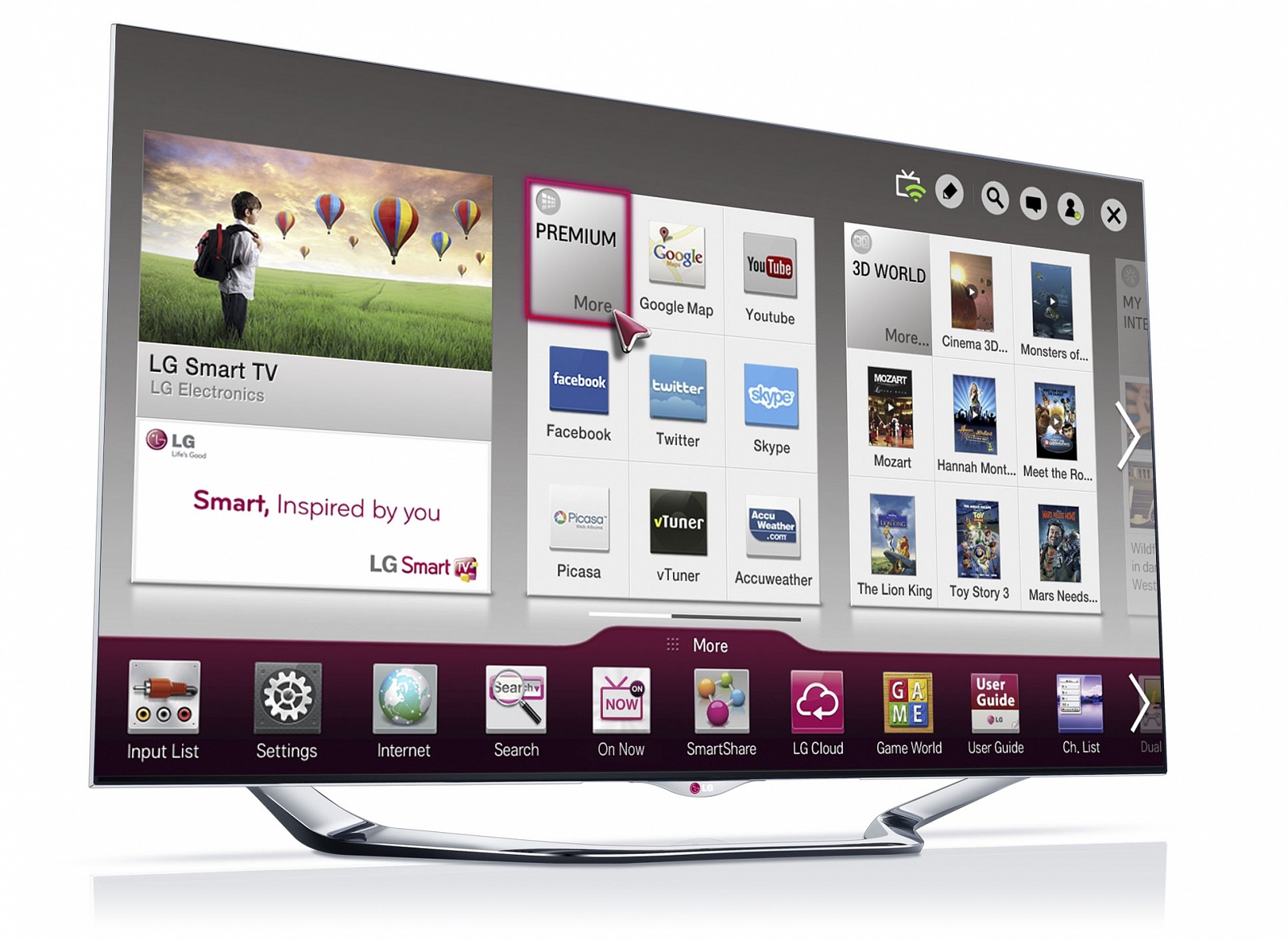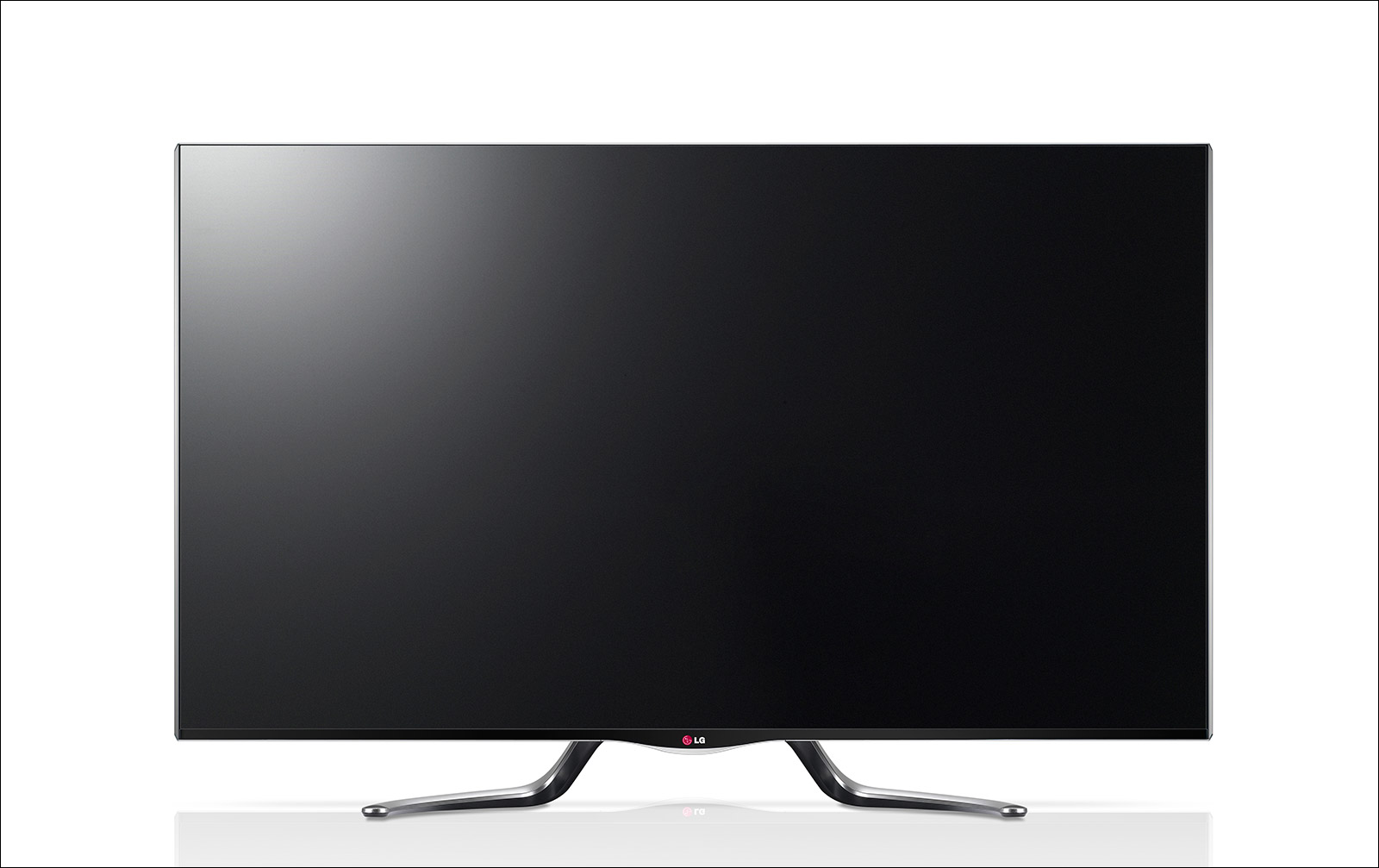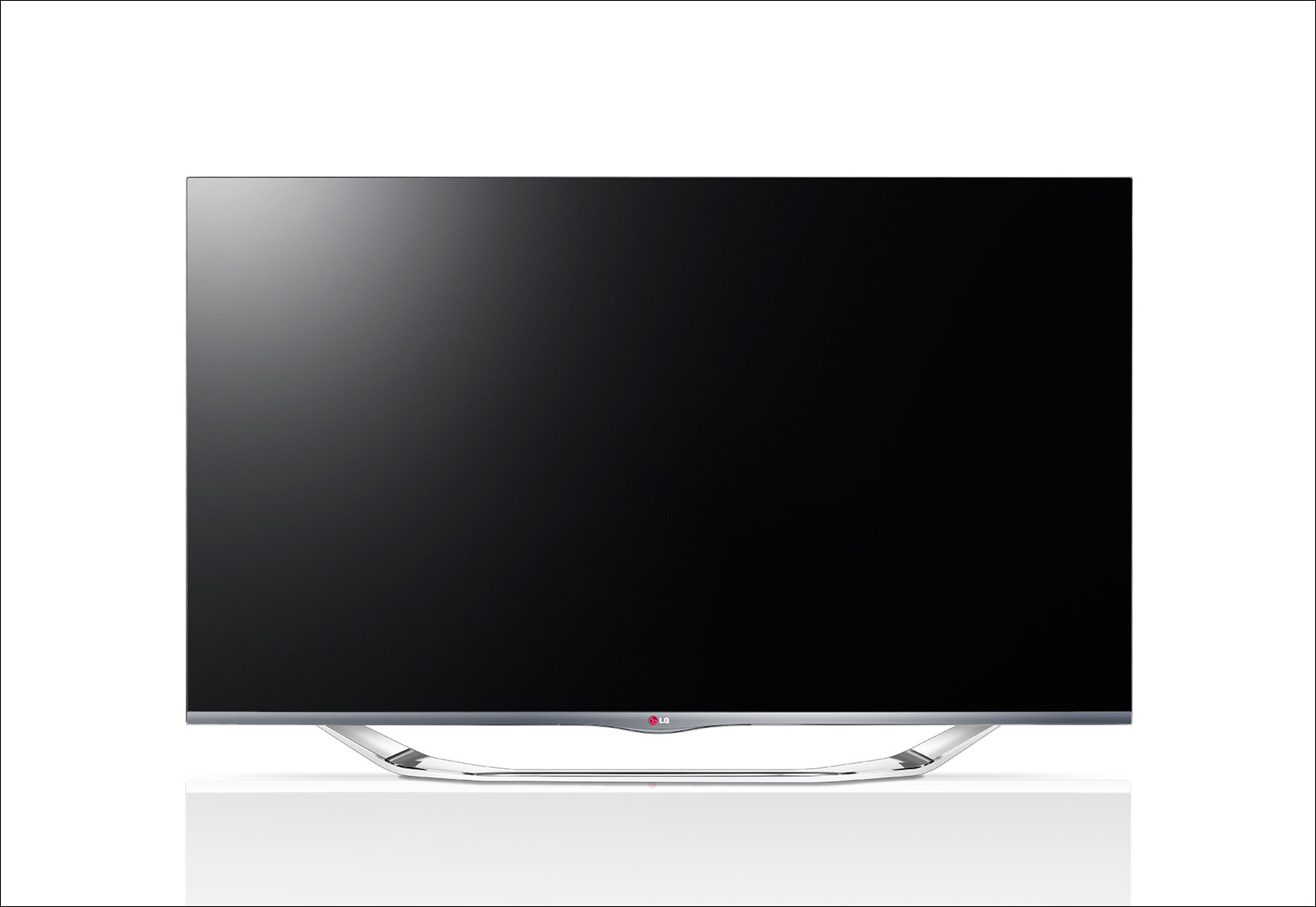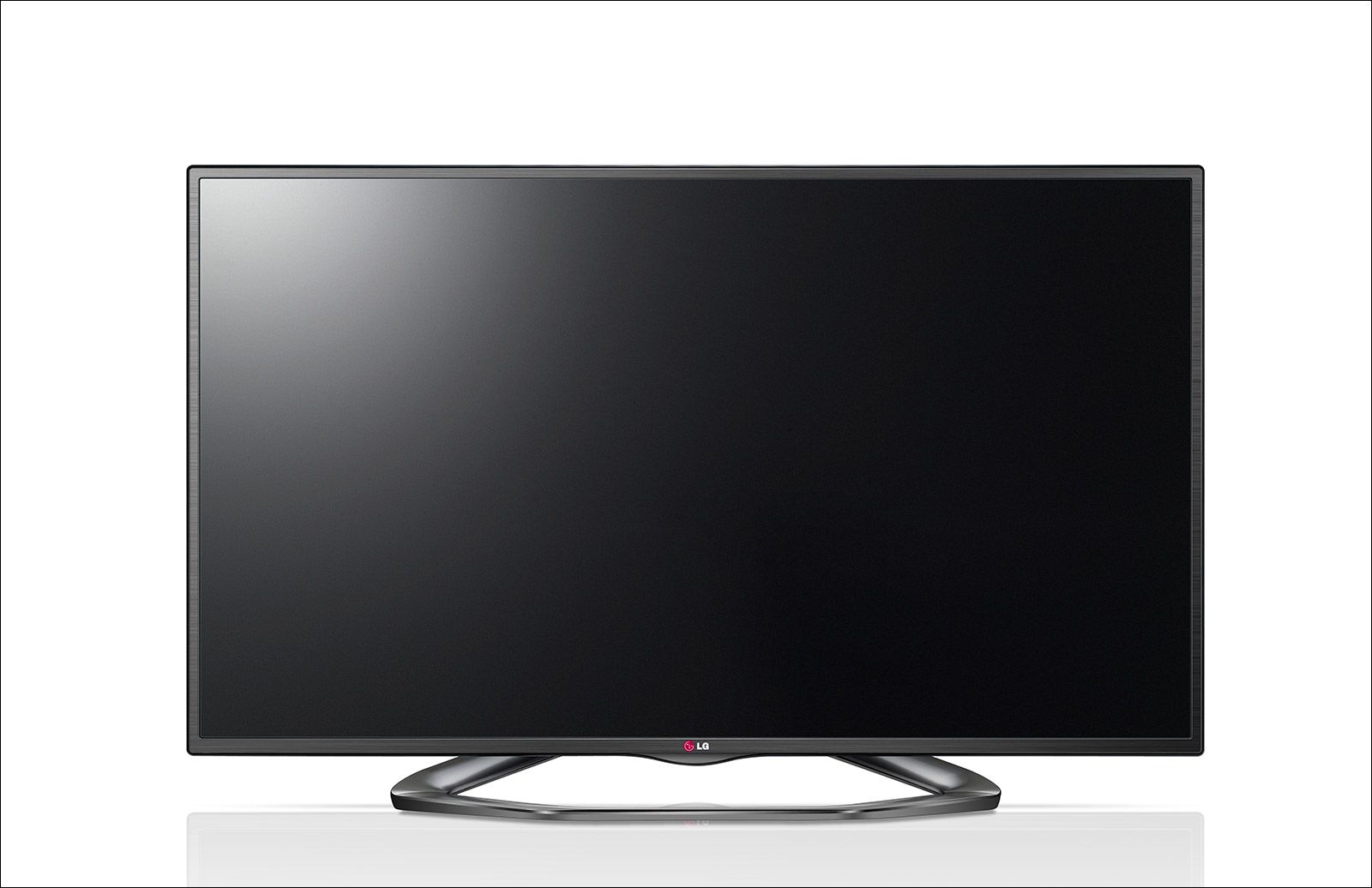LG TVs: 2013 lineup
In the spring of 2013, the presentation of new LG TVs took place in Russia, we talked about it. Then all the attention was focused on the flagship devices, which, however, is not surprising - in few places you can look at the OLED panel, showing a surprisingly contrasting picture and having a thickness of only a few millimeters, or on a huge 84-inch 4k2k TV with an amazingly clear and expressive picture . Everyone somehow forgot about the other models, but they also deserve attention, since without the enormous experience gained in the production of such TVs, we simply could not build those amazing models that "took away" all the attention from classical TVs.

What has changed in LG smart TVs in 2013, what technologies they carry, which models have certain features, as well as information on what to do if you want to ask a question about our products, but there is no specialist nearby - under the cut.
All models of LG TVs belong to one of the lines: the ninth, eighth, seventh, sixth and fifth. More line number -> cooler TV. To find out which group a particular model belongs to is very simple - look at the name of the model. The first figure is the desired model range. For example, LA960V - refers to the ninth series, and LA740V - to a less premium, seventh.
In the world of patent law research and attempts to protect intellectual property from outright plagiarism, all companies have to come up with sonorous names for certain technologies and publicize them. Not all users care about Full Super HD Media Nano LED Backlight, and some simply don’t know what is hidden behind these or those names. Therefore, we have prepared a brief reference on the most relevant and interesting technologies used in our televisions, we hope it will help you understand why you are giving your money. ;)
Nano full LED- special LED backlight LCD TV matrix. The specialty is that the LEDs are not placed by individual elements, but are practically “imprinted” in the light-scattering substrate. Each of them is not very large, but there are many of them, they provide excellent brightness and contrast of the picture, uniform illumination, good heat dissipation and are able to work with Micro Pixel Control technology.
Micro pixel control- controlled LED matrix backlight. Allows you to control the TV backlight separately for dark and light areas of the picture. As a result, in dark scenes, those details appear that were previously not noticeable, and light scenes do not “whiten” image elements. The technology is used only in those models that have full matrix illumination. Unfortunately, TVs with EDGE-backlight (in which the LEDs are located at the edges of the matrix, and the light-conducting substrate is occupied by scattering their light) technically cannot use MPC.
Miracast is a standard for wireless multimedia signal transmission, approved by the Wi-Fi Alliance, developed on the basis of Wi-Fi Direct technology, does not require special routers or transmitters.
Magic stand- A new stand, which ensures the safe installation of the TV on any flat surface: the TV can be easily rotated, but it is almost impossible to accidentally tilt or slide to / from yourself. With it, you can not be afraid for your little child, who, by stupidity, can turn a huge 60-inch TV onto herself. Turning it by 10-15 degrees is easy, pulling it toward you is almost impossible.
All other technologies are more or less known in the IT environment, so there is no need to talk about them separately, unless we give a small remark at the first mention.
With technologies, sort of like, more or less figured out, let's move on to specific examples? :)
The flagship model of the TV, which incorporates all the technology. Here and Micro Pixel Control, and Nano LED, and the latest generation dual-core processor, built-in Wi-Fi, camera, NFC, support for all kinds of protocols, image formats, and, of course, the latest generation of Smart TV.

Naturally, the Cinema 3D technology has nothing to do anywhere - the TV supports three-dimensional image and implements one of the best 3D image technologies: glasses based on the polarizing effect. No flicker from the LCD shutters, no batteries, simple and cheap glasses that are hard to break.
This model has two diagonals: 47 and 55 inches.
Eight hundred and sixtieth, as you might guess, refers to the eighth line of LG TVs. These are Hi-End TVs, slightly simplified technologically (compared to the flagship ninth series), but still have a lot of advantages. In fact, the only significant difference from the ninth series is the lack of the latest Nano LED backlight, instead, it uses a more classic matrix backlight on white LEDs. This made it possible to significantly reduce the cost of the flagship, practically without losing anything in the quality of the picture. Did people somehow live before the advent of Nano LED?

The choice of diagonals is more interesting here - models from 42 to 60 inches are available. At the presentation, they also mentioned the 70-inch version, but we can’t say yet whether it will be delivered to Russia.
Still a Hi-End segment. Compared to the 860th, this model does not have a built-in camera, all other technologies are saved.

The choice of diagonals is the same as in the flagship version: 55 and 47 inches.
This model opens the “middle class” of LG TVs: externally it practically does not differ from the older models, and internally, too. A slightly less efficient processor (but still quite powerful: at the level of the top models of 2012), last year's Wi-Fi module, in general, is a model for those who want a really high-quality picture and are not particularly concerned about the presence of an advanced processor or the latest electronics inside .

The choice of diagonals - like the 860th, from 42 to 60 inches.
Confident average, assembled on an elementary base of televisions in 2012, but flavored with current software and software features of 2013 models. It looks great, the picture quality over the year could not change so much that the difference becomes noticeable by eye. And if you can’t see the difference ...;)

The model is available in three diagonals - 42, 47 and 55 inches.
The last representative of the “middle class”: it does not use a frameless design, but otherwise it is the same 690th, with up-to-date software and a much wider selection of possible diagonals.

32, 39, 42, 47, 50, 55, and even 60 inches: a great budget option, suitable for almost any use case, at least please grandmother for a birthday, at least hang in the kitchen, even put in the bedroom. A frameless design ... you have to go, not "checkers"? :)
If, for some reason, you are catastrophically not happy with the presence of Smart TV in the TV - this model is for you.

32, 42, 47 inches, the lack of a great mind and software enhancers, but 3D has not gone anywhere. If you just need a TV or screen for a game console, maybe you should take a closer look at this model? :)
Since the 570th situation is the opposite of the one described above. No 3D, but there is a Smart TV, a dual-core processor, Miracast and all that is needed. Do you want a smart TV, but do not want to spend 60-70 thousand rubles? :) Not a fan of three-dimensional films, and you think that there is no need to overpay for what you will not use? Well, we were just thinking about you.

The choice of diagonals is from 32 to 55 (or even 60) inches. Unfortunately, the fifth series is not equipped with a Magic Stand; you will have to be content with "classics."
Here's a mini-tech review. We promised to tell where to go with our questions on our TVs. On a habr there is such a wonderful option - commenting on an article. Leave a comment with a question, in the evening we will collect them, send them where necessary, and specialists will try to help you in your TV-problems.
Thanks for attention and see you soon on the pages of Habr.

What has changed in LG smart TVs in 2013, what technologies they carry, which models have certain features, as well as information on what to do if you want to ask a question about our products, but there is no specialist nearby - under the cut.
Classification
All models of LG TVs belong to one of the lines: the ninth, eighth, seventh, sixth and fifth. More line number -> cooler TV. To find out which group a particular model belongs to is very simple - look at the name of the model. The first figure is the desired model range. For example, LA960V - refers to the ninth series, and LA740V - to a less premium, seventh.
Technology
In the world of patent law research and attempts to protect intellectual property from outright plagiarism, all companies have to come up with sonorous names for certain technologies and publicize them. Not all users care about Full Super HD Media Nano LED Backlight, and some simply don’t know what is hidden behind these or those names. Therefore, we have prepared a brief reference on the most relevant and interesting technologies used in our televisions, we hope it will help you understand why you are giving your money. ;)
Nano full LED- special LED backlight LCD TV matrix. The specialty is that the LEDs are not placed by individual elements, but are practically “imprinted” in the light-scattering substrate. Each of them is not very large, but there are many of them, they provide excellent brightness and contrast of the picture, uniform illumination, good heat dissipation and are able to work with Micro Pixel Control technology.
Micro pixel control- controlled LED matrix backlight. Allows you to control the TV backlight separately for dark and light areas of the picture. As a result, in dark scenes, those details appear that were previously not noticeable, and light scenes do not “whiten” image elements. The technology is used only in those models that have full matrix illumination. Unfortunately, TVs with EDGE-backlight (in which the LEDs are located at the edges of the matrix, and the light-conducting substrate is occupied by scattering their light) technically cannot use MPC.
Miracast is a standard for wireless multimedia signal transmission, approved by the Wi-Fi Alliance, developed on the basis of Wi-Fi Direct technology, does not require special routers or transmitters.
Magic stand- A new stand, which ensures the safe installation of the TV on any flat surface: the TV can be easily rotated, but it is almost impossible to accidentally tilt or slide to / from yourself. With it, you can not be afraid for your little child, who, by stupidity, can turn a huge 60-inch TV onto herself. Turning it by 10-15 degrees is easy, pulling it toward you is almost impossible.
All other technologies are more or less known in the IT environment, so there is no need to talk about them separately, unless we give a small remark at the first mention.
The lineup
With technologies, sort of like, more or less figured out, let's move on to specific examples? :)
LG LA960V
The flagship model of the TV, which incorporates all the technology. Here and Micro Pixel Control, and Nano LED, and the latest generation dual-core processor, built-in Wi-Fi, camera, NFC, support for all kinds of protocols, image formats, and, of course, the latest generation of Smart TV.

Naturally, the Cinema 3D technology has nothing to do anywhere - the TV supports three-dimensional image and implements one of the best 3D image technologies: glasses based on the polarizing effect. No flicker from the LCD shutters, no batteries, simple and cheap glasses that are hard to break.
This model has two diagonals: 47 and 55 inches.
LG LA860V
Eight hundred and sixtieth, as you might guess, refers to the eighth line of LG TVs. These are Hi-End TVs, slightly simplified technologically (compared to the flagship ninth series), but still have a lot of advantages. In fact, the only significant difference from the ninth series is the lack of the latest Nano LED backlight, instead, it uses a more classic matrix backlight on white LEDs. This made it possible to significantly reduce the cost of the flagship, practically without losing anything in the quality of the picture. Did people somehow live before the advent of Nano LED?

The choice of diagonals is more interesting here - models from 42 to 60 inches are available. At the presentation, they also mentioned the 70-inch version, but we can’t say yet whether it will be delivered to Russia.
LG LA790V
Still a Hi-End segment. Compared to the 860th, this model does not have a built-in camera, all other technologies are saved.

The choice of diagonals is the same as in the flagship version: 55 and 47 inches.
LG LA740V
This model opens the “middle class” of LG TVs: externally it practically does not differ from the older models, and internally, too. A slightly less efficient processor (but still quite powerful: at the level of the top models of 2012), last year's Wi-Fi module, in general, is a model for those who want a really high-quality picture and are not particularly concerned about the presence of an advanced processor or the latest electronics inside .

The choice of diagonals - like the 860th, from 42 to 60 inches.
LG LA690V
Confident average, assembled on an elementary base of televisions in 2012, but flavored with current software and software features of 2013 models. It looks great, the picture quality over the year could not change so much that the difference becomes noticeable by eye. And if you can’t see the difference ...;)

The model is available in three diagonals - 42, 47 and 55 inches.
LG LA620V
The last representative of the “middle class”: it does not use a frameless design, but otherwise it is the same 690th, with up-to-date software and a much wider selection of possible diagonals.

32, 39, 42, 47, 50, 55, and even 60 inches: a great budget option, suitable for almost any use case, at least please grandmother for a birthday, at least hang in the kitchen, even put in the bedroom. A frameless design ... you have to go, not "checkers"? :)
LG LN610V
If, for some reason, you are catastrophically not happy with the presence of Smart TV in the TV - this model is for you.

32, 42, 47 inches, the lack of a great mind and software enhancers, but 3D has not gone anywhere. If you just need a TV or screen for a game console, maybe you should take a closer look at this model? :)
LG LN 570V
Since the 570th situation is the opposite of the one described above. No 3D, but there is a Smart TV, a dual-core processor, Miracast and all that is needed. Do you want a smart TV, but do not want to spend 60-70 thousand rubles? :) Not a fan of three-dimensional films, and you think that there is no need to overpay for what you will not use? Well, we were just thinking about you.

The choice of diagonals is from 32 to 55 (or even 60) inches. Unfortunately, the fifth series is not equipped with a Magic Stand; you will have to be content with "classics."
Draw a line
Here's a mini-tech review. We promised to tell where to go with our questions on our TVs. On a habr there is such a wonderful option - commenting on an article. Leave a comment with a question, in the evening we will collect them, send them where necessary, and specialists will try to help you in your TV-problems.
Thanks for attention and see you soon on the pages of Habr.
